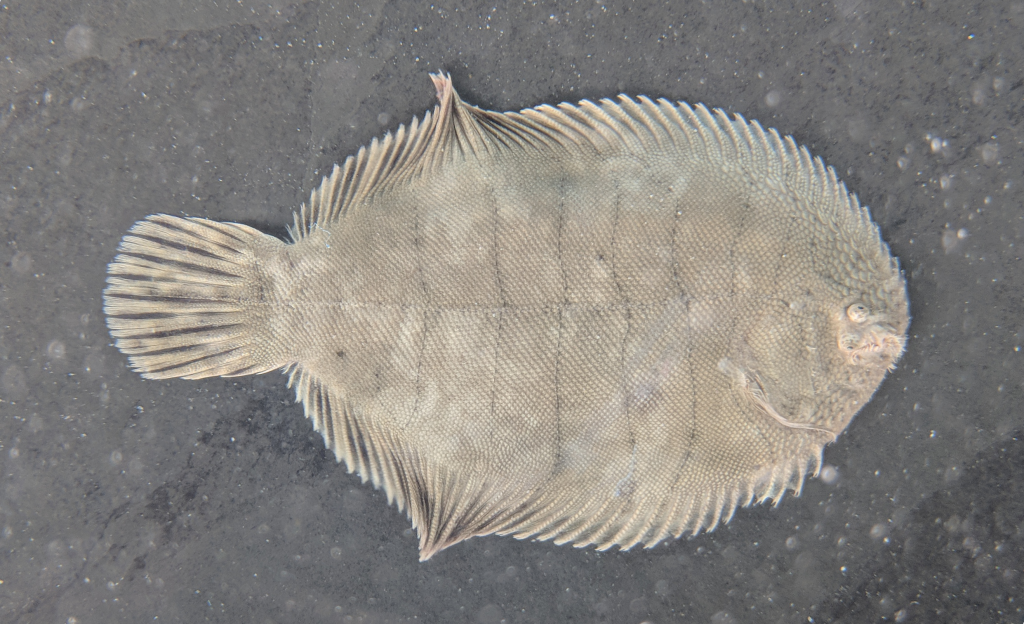Jan. 22, 2019
A new study using high-speed video analysis reveals surprising findings about how flatfish use their fins to “walk” across the ocean floor. Northern Arizona University professor of biology Alice Gibb is co-author of the paper written by a field station collaborator, Claire Fox, now a doctoral student at Cornell. The study, recently published in Zoology, was featured in National Geographic because of its novel approach to research.
Flatfish are a remarkably successful group; there are nearly 800 different species, including flounder, halibut and sole. Many flatfish predators, such as Pacific halibut, are economically important as seafood.
As adults, flatfishes lie on one side on the bottom of the ocean and survey the surrounding environment with eyes that protrude from their upward-facing side. As they rest on the ocean floor, they can use their dorsal and anal fins to “walk” without stirring up the substrate or creating pressure waves that could alert predators or potential prey to their movements.
Innovative technologies, methods help scientists investigate how animals interact with their environments
To conduct the study, the scientists collected more than 30 individual flatfishes representing six different species—Pacific sand sole, English sole, starry flounder, slender sole, butter sole and rock sole—from Puget Sound and held them in seawater tanks.
“We used some innovative technologies and methods during our fieldwork at Friday Harbor Laboratories to help us investigate our research questions,” Gibb said. “These questions included whether flatfishes use their median fins to move along the substrate; what patterns of fin movement are used to generate these behaviors; and ultimately, is benthic walking in flatfishes a previously undescribed vertebrate gait?”
The researchers made the high-speed video recordings as the fish moved across the bottom of the tanks. Slowing down the fishes’ motion meant they could see things the human eye would otherwise miss. Using the video footage, the team analyzed 67 sequences of the fish walking, bounding and swimming.
After nearly two years of study, the scientists concluded that flatfishes are structurally and functionally unique among vertebrates for their ability to move across the ocean floor using a walking gait—and that these unusual capabilities warrant additional investigation.
Findings to generate bio-inspired technologies and devices
Gibb and her team plan to do future work studying flatfish locomotion involving the use of electromyography (measuring the electrical activation of muscles by the nervous system) and Botox muscle-paralysis studies (inactivating the muscle with botulinum toxin), a methodology pioneered in the Gibb lab at NAU.
Based on these findings, Gibb and her collaborators can determine how the muscles of the fish actuate, or control, the fin rays to produce the ground reaction forces that propel the fish forward. They plan to use these studies of organism-environment interactions to generate bio-inspired technologies and devices.
“We will use these findings to inform the creation of new, human-serving robots,” Gibb said. “Flatfishes can provide a template for designing biomimetic, aquatic drones that are capable of moving in the water column by swimming and walking across the sand. ‘Flatfish’ drones could be used to inspect pipes and cables that travel for miles across the sea floor, for example.”
Kerry Bennett | Office of the Vice President for Research
(928) 523-5556 | kerry.bennett@nau.edu




